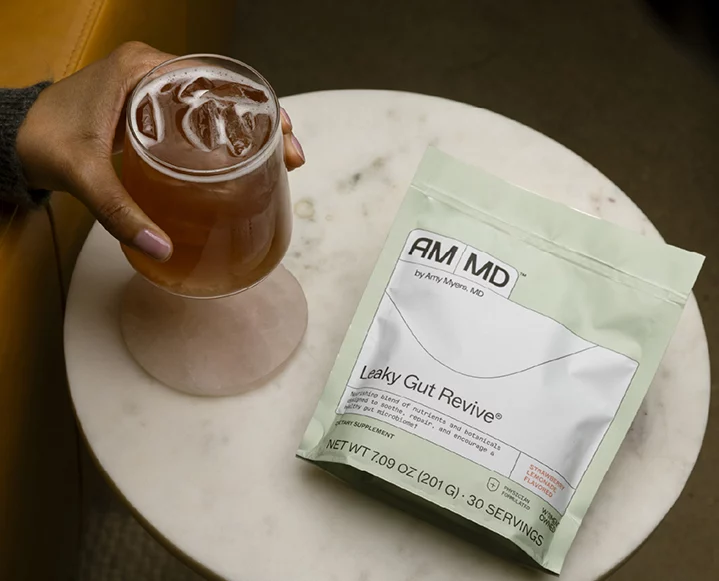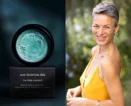This story originally ran in 2018, but it’s so useful we’re bringing it back!
What The Heck is seed cycling? Holistic nutritionist, wellness pro and founder of Women’s Wellness Collective, Kristin Dahl recently introduced us to the term while decoding the hormonal stages of our monthly cycle. We’re intrigued by the idea and love the holistic nature of the approach. How can loading up your diet with certain seeds, at certain time of the month, benefit the inner-workings of your body? Kristin explains…
Seed cycling is a method of using various seeds to support different phases of our monthly cycles to balance hormone levels, relieve PMS and perimenopause symptoms, stimulate menstruation if it’s absent (amenorrhea), increase fertility and support the body in healing more serious conditions like ovarian cysts, PCOS and endometriosis. Seed cycling is an incredibly natural and inexpensive way to support the female body, and it’s easy to do. It simply uses food medicine as the healing modality, alleviating the need for any other therapies, medications, supplements or herbs. Cycling refers to the rotation of different seeds between our two main menstrual cycle phases (follicular and luteal), which helps to regulate hormone secretions within the body and hormone excretions out of the body.
About Your Cycle…
Our menstrual cycles have two main phases:
+ The follicular phase (phase 1) begins with menstruation
+ The luteal phase (phase 2) starts after ovulation
In traditional ideologies, the phases would be on a 14-day rotation of a 28-day cycle, with phase 1 beginning on the new moon, and phase 2 beginning on the full moon. Realistically, a 28-day cycle doesn’t always happen, and that’s alright. A woman’s cycle may range from 21 to 35 days. Being removed and disconnected from nature can be a contributing factor to our cycles being off from this ancient rhythm, as can experiencing chronic levels of unmanaged daily stress. However, using the seed cycling system can help to set your menstrual phases in sync with what is right for your body. It’s also helpful to reconnect with nature as often as possible, spending time outdoors and practicing earthing and to begin following the moon phases and gazing at the moon several times throughout the month.
Keep in mind that change takes time, and we need to honor the delicate balances and sensitivities of our bodies. It will likely take three to four cycles before you begin to see noticeable changes, so be patient and allow the power of food medicine to heal your body. It’s helpful to continue cycling, even after you have noticed substantial changes.
*Consult with a holistic practitioner if you have severe hormonal imbalances & need individualized support.
The cycling uses alternating seeds high in specific oils and nutrients to balance the hormones that are prevalent in each phase. Use this two-stage guide to support hormone balance and regulation.
How To Seed Cycle
You will consume one tablespoon of each of the specific freshly ground seeds per day in equal parts (two tablespoons total). Where to start depends on how familiar you are with your cycle and how regular it is. This is where a period tracker or a good old-fashioned calendar can help.
Follicular Phase
The follicular phase lasts about 14 days, starting on the first day of menstruation. In this phase, our estrogen levels start low and steadily increase in preparation for ovulation (the release of an egg) and potential pregnancy. Rising estrogen levels increase luteinizing hormone (LH) levels, while decreasing estrogen levels cause the release of follicle stimulating hormone (FSH) – so there’s a fine line between too much and too little estrogen, and imbalanced levels can wreak havoc on these other hormones too. If we keep estrogen levels balanced, LH and FSH levels will follow. Cycling with seeds that contain phytoestrogens will do just that. Phytoestrogens are a plant-based source of estrogen that adapt to the body’s estrogen levels. They increase estrogen levels where needed, yet they also can decrease excess estrogen in the body. This is thanks to the lignans they contain, which bind to estrogen receptors and help to modulate estrogen production. Along with phytoestrogens, seeds that are high in omega 3s are also beneficial, as omega 3s help to reduce inflammation in the body, regulate FSH levels and support reproductive membrane function.
Along with the seed cycling, fish oil supplementation during the follicular phase can be a beneficial addition as it’s a powerful anti-inflammatory and another great source of omega 3s.
Start phase 1 cycling on the first day of your period and continue it for approximately 14 days. If you’re aware of your day of ovulation (which can be determined by testing your cervical mucus or using an at-home kit), continue the cycle until this day. If your follicular phase lasts longer than three weeks, this is a sign that you may have some imbalances.
Flax Seeds
+ High in lignans to block excess estrogen production
+ High in omega 3s
Pumpkin Seeds
+ Rich in zinc, which prepares the body for progesterone secretion in the next phase
+ High in omega 3s
Fish Oil (Bonus)
+ Contains EPA and DHA, important omega 3 fats found only in cold water fish
+ High in lignans
Luteal Phase
The luteal phase should last at least ten days, and any less is a clear indicator of low progesterone and possible fertility issues. Progesterone is responsible for enhancing the endometrium (uterine lining) and facilitating egg implantation, and reaching adequate levels of progesterone requires this timeframe. The luteal phase is brought on by the sudden drop in estrogen, FSH and LH, which occurs just after ovulation. This is when progesterone levels should begin to rise steadily. Estrogen levels also increase during this phase, and if they get too high, they’re responsible for PMS symptoms and a difficult cycle. Progesterone keeps estrogen in check, and so modulating healthy progesterone levels is vital for reproductive health. In this phase, we want to focus on omega 6s, which convert into gamma-linolenic acid (GLA) in the body, supporting progesterone levels and reducing inflammation in the body related to PMS.
In addition to the seed cycling, evening primrose oil (EPO) supplementation during the luteal phase can be helpful as well, as it’s another source of omega 6s and helps to reduce PMS pain and boost fertility.
Begin phase 2 after ovulation or after two weeks to balance hormones. If you have an irregular cycle or if you suffer from amenorrhea, an easy start date is on the first day of the new moon. This allows for a simple date sequence to keep track of and allows you to follow an equal, alternating 14-day cycle.
Sesame Seeds
+ High in lignans to modulate estrogen and progesterone levels
+ High in omega 6 (which converts into GLA in the body)
Sunflower Seeds
+ High in selenium, which supports liver function to prevent clogging from excess hormones, resulting in proper hormone excretion
+ High in omega 6 (which converts into GLA in the body)
Evening Primrose Oil (Bonus)
+ High in gamma-linoleic acid (GLA) and other important omega 6 fatty acid
Things to Remember
+ Always use raw (unroasted, unsalted/seasoned) seeds to ensure they have their medicinal properties in full. Use organic seeds when available.
+ Seeds are high in fats and can oxidize when left in the sunlight and warmer temperatures. Try to keep seeds in a cool, dark place – preferably the fridge.
+ Seeds begin to oxidize 15 minutes after they’re ground, so grinding fresh is best. If this is an inconvenience or not always available, store pre-ground seeds in the freezer and take the portion as needed.
+ Seeds can be eaten with other foods. Try them in a smoothie, salad, soup, or grain bowl. If you’re eating them with warm foods, add them to the dish after cooking to avoid denaturing the nutrients.
Grab this recipe for Seed Cycling Crackers to make this all incredibly easy!











